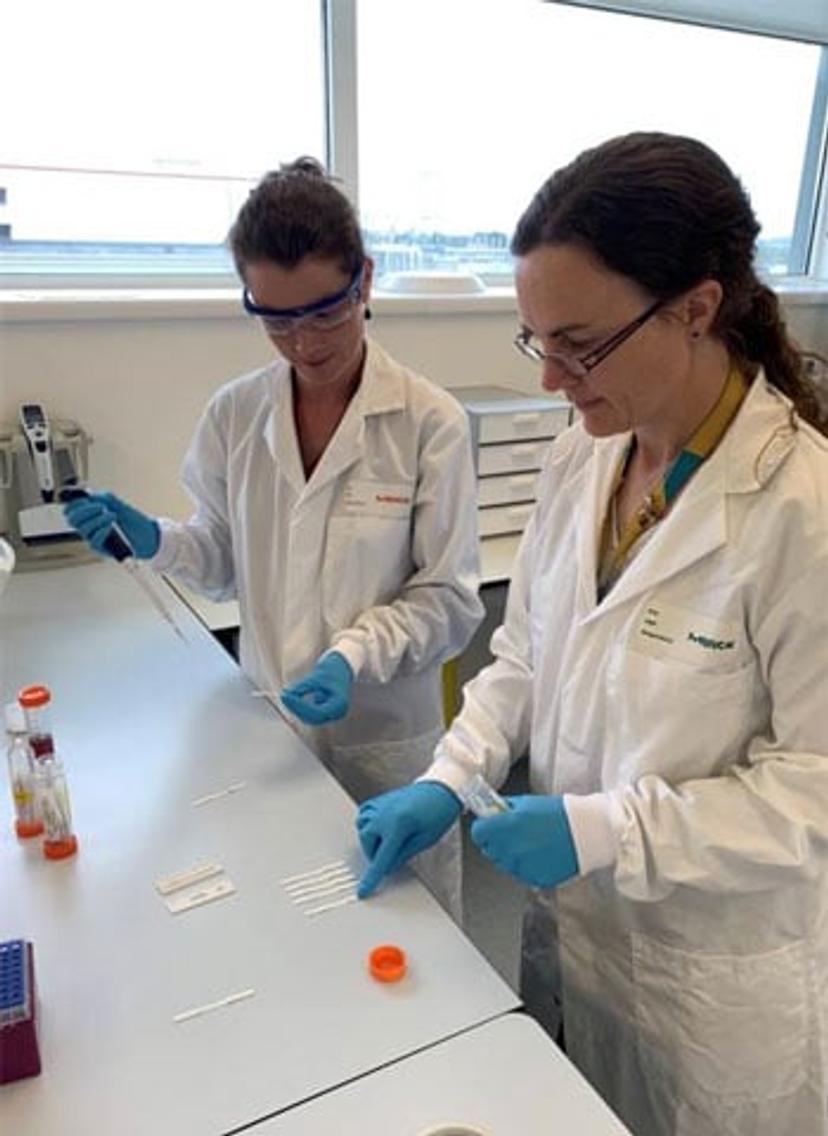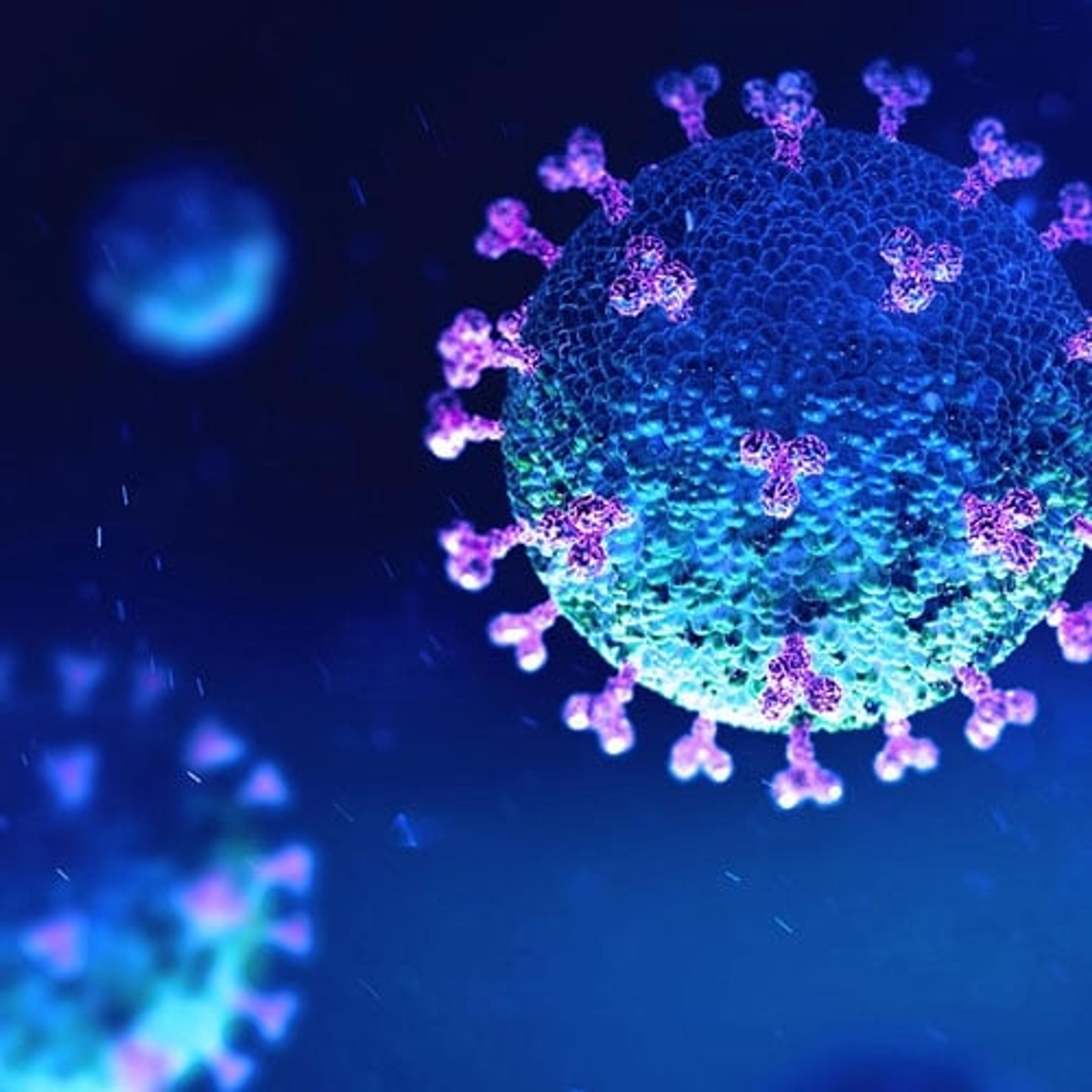COVID-19 testing using lateral flow assays: sensitive, rapid, easy to use and point-of-care
Learn about the potential of lateral flow assays in detecting symptomatic and asymptomatic COVID-19 infections
13 Aug 2020
Katie O’Brien, R&D scientist, and Dr. Eileen Hannigan, senior scientist, Merck KGaA, Darmstadt, Germany Diagnostic Solutions Group
Critical efforts are currently being made to reliably detect COVID-19 infections as well as test the immunity of populations. In developing a COVID-19 test that is accurate, fast, and sensitive, researchers need to make important decisions about which assay best serves the application. Lateral flow immunoassay, a membrane-based portable platform to detect and quantify analytes without expert support, akin to home pregnancy tests, is a leading diagnostic choice compared to other more elaborate and time-consuming options.
In this exclusive SelectScience interview, we speak with Dr. Eileen Hannigan, senior scientist, and Katie O’Brien, R&D scientist, at the Merck KGaA, Darmstadt, Germany Diagnostic Solutions Group based in Cork, Ireland. Along with a dedicated team of scientists, Hannigan and O’Brien are making valuable contributions towards COVID-19 diagnostics using lateral flow assays. “We provide creative solutions to technical challenges that our customers have during the COVID-19 test development,” explains Hannigan.
Portable point-of-care
The design, application, and manufacturing of lateral flow tests offer numerous benefits compared to other immunoassays such as ELISA, especially during a global pandemic when time is of the essence. “Lateral flow tests are cost-effective,” says O’Brien. “They're cheap to manufacture at a large scale. They are also simple to use, offer results rapidly, and are portable.”
O’Brien continues: “Lateral flow tests are user friendly. You don’t need experienced lab technicians to run the tests.” Home pregnancy tests are proof that lateral flow tests can be successfully performed without any help from a qualified healthcare professional. “In point-of-care applications, speed is a critical parameter,” says O’Brien. “Using lateral flow testing, you can get results in less than 10 minutes.” Speedy testing of analytes is particularly useful for time-sensitive infection profiles as seen with the novel coronavirus or when there is a significant backlog or high demand for testing.
“Due to the portable nature of the test, it can go anywhere. This is particularly useful to access remote locations where healthcare testing facilities are limited or may not exist at all,” O’Brien adds. For instance, bio-defense lateral flow tests have previously been used in far-off locations to detect proteins associated with biological warfare. “ELISA tests, on the other hand, require trained professionals, expensive equipment, and a proper lab environment. It can take two to three hours to get results depending on the different incubation times of the specific protocol,” notes O’Brien.
Tackling the pandemic
Given its clear benefits compared to other immunoassay methods, the research team at Merck KGaA, Darmstadt, Germany is currently providing the ingredients to develop lateral flow assays to improve COVID-19 detection using both serological and antigen-based approaches. Currently, the gold standard for COVID-19 detection is RT-PCR, which is time-consuming and needs laboratory expertise. “RT-PCR only determines active infections,” says Hannigan. “So, it can't detect whether a person has had the disease. Lateral flow-based antibody or serological tests, however, can diagnose different stages of the COVID-19 infection.”
The lateral flow test detects the presence of antibodies against the virus in the sample being tested. “These antibodies can be IgM antibodies if there’s an acute infection. Or IgG antibodies, for longer-term infections,” explains Hannigan. Additionally, lateral flow assays can also be used as an additional diagnostic tool. “It could identify those people who are currently asymptomatic, have cleared the virus, and are no longer at risk of spreading the virus to others,” notes Hannigan. “It could also provide population screening to determine the level of immunity within the population.” Such a test, when available, can substantially influence medical and economic decisions for countries that remain affected by COVID-19 as well as those bracing for a second surge in the near future.
Unprecedented challenges
Developing lateral flow COVID-19 assays isn’t without a few pressing technical challenges that the diagnostics team is currently addressing. Sensitivity is a key parameter for reliable and accurate detection. “We obviously want the tests to be highly sensitive. So, we’re developing our antigen detection test using europium particles that are tenfold more sensitive than latex or colloidal particles,” explains O’Brien. “They can provide quantitative results as opposed to a qualitative result.”
“In developing our COVID-19 detection test, there currently isn’t a reference or a benchmark to measure test performance against due to the unprecedented nature of the viral infection,” continues O’Brien. “Another challenge for the antigen detection test is sample preparation from a swab that requires a specially formulated buffer. These could contain denaturing agents. So, while trying to detect a protein of interest in the lateral flow test, the buffers can inadvertently degrade or destroy the proteins during sample preparation.” The team is currently testing and optimizing the necessary steps involved in resolving sample preparation challenges.
The time of collection of the sample is an important factor due to the nature of COVID-19 infection. Between day 7 and day 10 of the infection, viral proteins start to decrease, slipping below the detectable limit. Simultaneously, the immune response has started to ramp up but may not yet be at a detectable level. “If the patient doesn't have an active infection, there may be insufficient viral load in the sample, resulting in false negatives,” explains Hannigan.
Future outlooks
The characteristic nature of COVID-19 infection cannot be altered but the scientists hope that by collaborating with companies and research groups worldwide and gaining deeper insights into the infection and the virus itself, it’s possible to make better decisions about diagnostics. “It's great to see the scientific community coming together in this effort against COVID-19,” says O’Brien. In developing a diagnostic test using nasal pharyngeal swab samples, the team is also exploring possibilities to obtain the necessary biosafety facility upgrades.
Developing an assay that can directly serve the clinical community during the pandemic has far-reaching potential. “I hope that our research will allow our customers to use the critical raw materials and reagents that we supply in the manufacturing of their test kits, which will enable faster, more reliable diagnosis of COVID-19,” says Hannigan.
“This is something that I feel very fortunate to be involved in,” shares O’Brien. “It’s wonderful to be able to contribute towards COVID-19 testing.”
Request a free sample pack to see how Hi-Flow™ Plus membranes can enhance your tests.


